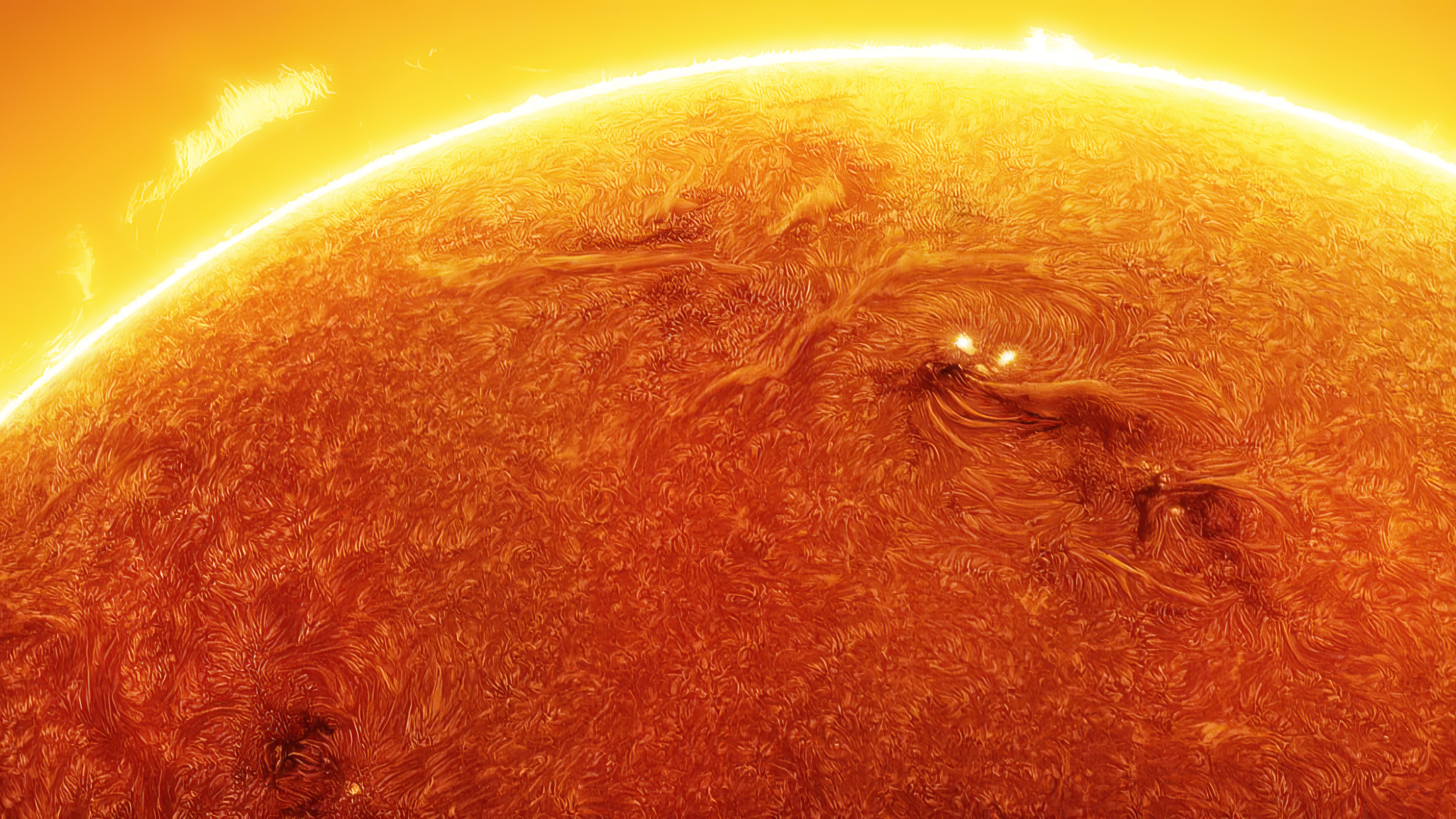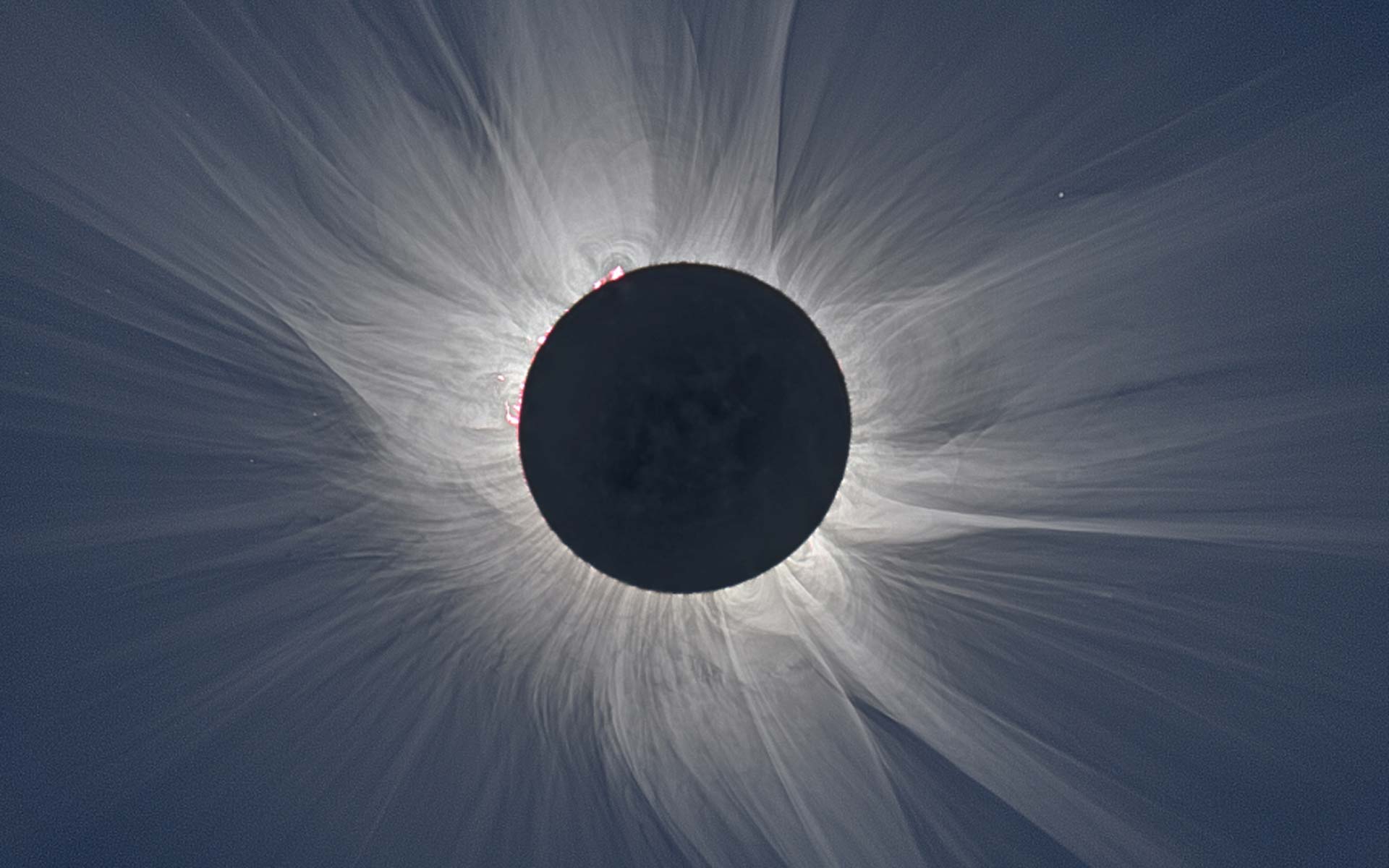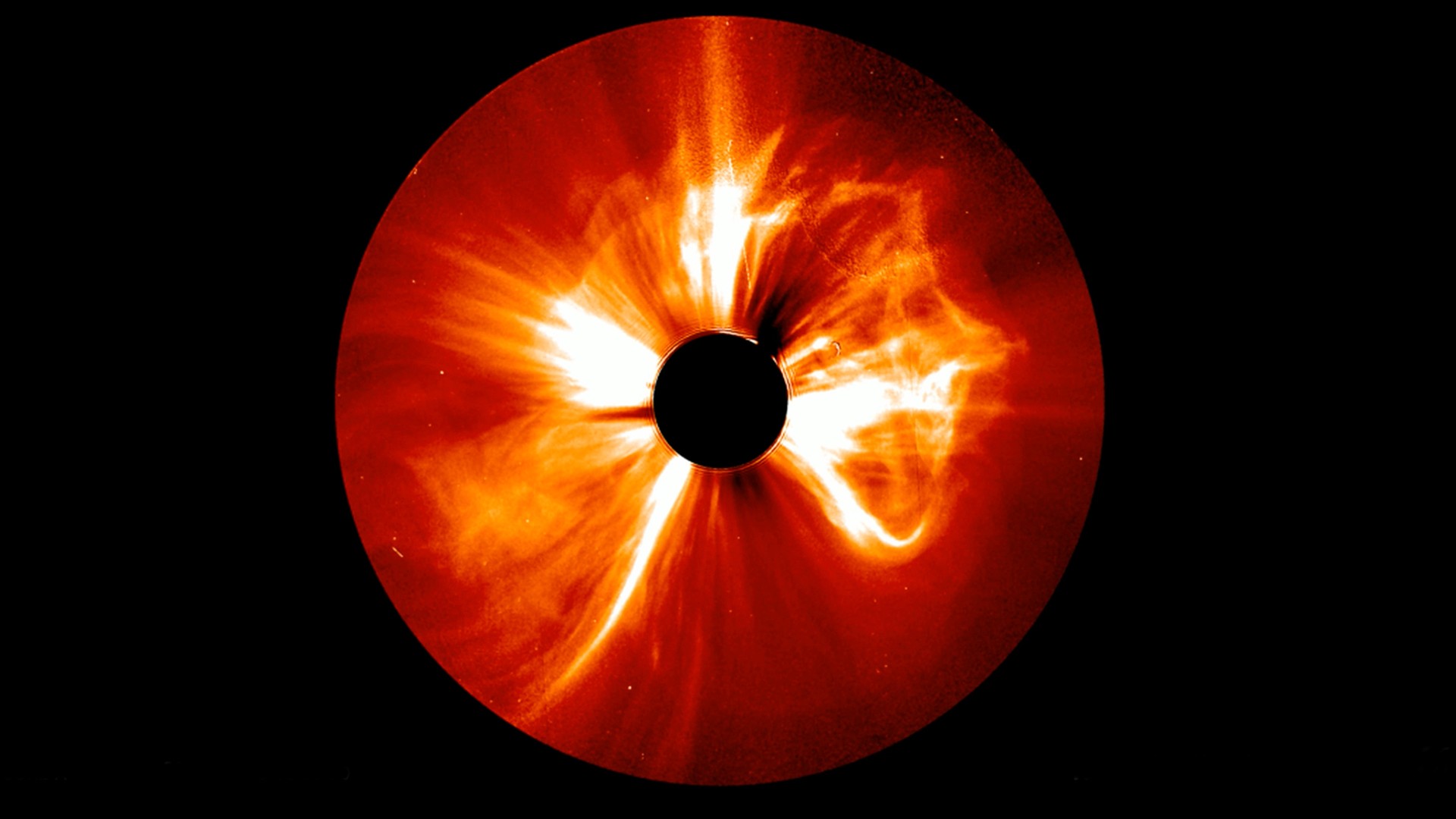
Since we began sending satellites to space, our knowledge of the sun has increased exponentially. We saw the sun at new wavelengths, observing our local star in ultraviolet and X-rays for the first time. These observations revealed many new unexplained phenomena on the sun. Many of these early solar observations have been long since explained, but there are still ongoing mysteries about the sun that scientists are working to understand.
Here, we outline three of the main outstanding puzzles of our local star, although there are certainly others. Most current and future projects to observe the sun, either from the ground or in space, include one or more of these mysteries as a primary science goal.
1. The coronal heating problem
The sun's outer atmosphere, called the corona, has a temperature of around 1.8 million degrees Fahrenheit (1 million degrees Celsius). However, the surface of the sun, called the photosphere, has a much, much cooler temperature of 10,000 F (5,500 C). At a glance, this seems puzzling. If the sun's atmosphere gets its energy from the sun, how can the corona be hotter than the sun itself?
Related: Magnetic fields on the sun could solve long-standing solar heating mystery

A common analogy used to explain this is a campfire: If a campfire is providing heat, you would expect the air to get cooler, not hotter, farther from the campfire — as is the case with the sun. However, this is actually a horrible analogy because it misunderstands the true definition of temperature in physics.
In physics, temperature is defined as the amount of energy within the atoms that make up a substance — for example, the air around you. If air atoms are vibrating with a lot of energy, the air is hot. If they are vibrating less, the air is cooler. But this definition doesn't consider density. If the air is thicker with more atoms of the same temperature, the air temperature doesn't change. What does change, however, is the energy within the air around us.
So, in the context of the sun, the corona is far hotter — but far less dense — than the sun's surface. The surface, on the other hand, is cooler but with much higher densities. The result is that although the temperature of the photosphere is lower, the total energy is still higher.
But although we know the corona is hot because of the higher energy in the photosphere, this still doesn't solve the coronal heating problem. What remains a mystery is how the energy is transported from the sun's surface to its atmosphere. There are multiple theories, but our observations have not provided any conclusive evidence … yet.
2. The sun's internal dynamo and the solar cycle
The sun follows an 11-year cycle of increasing and decreasing activity. At the peak of this solar cycle — called solar maximum — sunspots, solar flares and coronal mass ejections (CMEs) are numerous. At solar minimum, the sun is inactive for months to years at a time. The period of the 11-year cycle is fairly predictable, consistently falling fairly close to this time span. What changes considerably from cycle to cycle, however, is the magnitude of solar maximum. Some solar cycles have a peak over twice that of others.

In general terms, we understand what drives the solar cycle. Because the sun rotates at different speeds at different latitudes, the global magnetic field slowly winds up and becomes more concentrated, producing more magnetic activity. Eventually, the magnetic field winds up so much that it disappears below the sun's surface, revealing a basic solar minimum magnetic field. Although we understand this at a top level, the intricate physics driving the sun's magnetic field from inside the sun — called the solar dynamo — and why that causes 11-year cycles with varying peaks are not yet fully understood.
3. Predicting solar flares and coronal mass ejections

Solar flares and CMEs (eruptions from the sun) are the primary drivers of space weather — the influence of the sun on the near-Earth environment, with implications for our power grids, satellites and radio communication. Around the world, dozens of space weather forecasters release regular predictions to key stakeholders, informing them of any potential disruption from the sun. These forecasters do a fantastic job, but they are very limited by both available observations and our limited collective knowledge about the drivers of solar flares and CMEs.
Currently, our forecasting of flares and CMEs is probabilistic and reactive. We can determine when they have a high likelihood of occurring, but not specifically when one will erupt. For us to get better at predicting these events, we must first understand the intricate processes that trigger flares and CMEs on very small scales. This is another key area of ongoing research.
What tools do we have to answer these questions?

We are currently in a data-rich era of solar physics research. In space, NASA has a host of heliophysics missions in Earth orbit, including the Solar Dynamics Observatory and the Interface Region Imaging Spectrograph. These will be joined later this decade by NASA's Multi-slit Solar Explorer mission. Key Earth-orbit telescopes also include Japan's Hinode, India's Aditya-L1 and China's Advanced Space-based Solar Observatory.
Orbiting the sun, we have the European Space Agency's Solar Orbiter and NASA's Parker Solar Probe. And finally, we have a host of solar telescopes on the ground, the largest of which is the National Science Foundation's Inouye Solar Telescope. Together, these solar physics missions, alongside others, are doing a fantastic job of providing the data necessary to help solve the outstanding mysteries of the sun.







